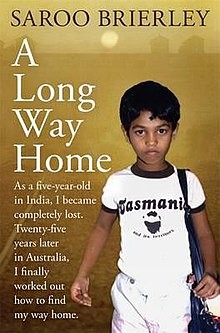March 2019 Newsletter
The 1.5 Generation: A Personal Culture Clash 7.5
Westy Egmont, Director IIL
Research
Feliciano, C., & Rumbaut, R. (2018). Varieties of Ethnic Self-Identities: Children of Immigrants in Middle Adulthood. RSF: The Russell Sage Foundation Journal Of The Social Sciences, 4(5), 26-46. doi: 10.7758/rsf.2018.4.5.02
Conventional wisdom often suggests that identity formation is dealt with in adolescence and early adulthood. For children of immigrants, however, grappling with ethnic identity proves to be a more complex matter. This longitudinal study examines how ethnic self-identity often changes between mid-adolescence and middle adulthood for children of immigrants. It shows that self-identity is often not stabilized until middle adulthood. More precisely, in their late thirties, children of immigrants report more solidified ethnic identities that range from strong ethnic affiliations to indifference. Of particular relevance, these identities impacted political views, behaviors, interethnic friendships, and cultural traditions, but showed no influence on interethnic romantic relationships. For social workers, these findings hold particular utility as they highlight how intricate ethnic identity formation can be for children of immigrants. With this knowledge, social workers should bear in mind that children of immigrants may still be forming key parts of their ethnic identities well into adulthood.
Basu, S. (2018). Age-of-Arrival Effects on the Education of Immigrant Children: A Sibling Study. Journal Of Family And Economic Issues, 39(3), 474-493. doi: 10.1007/s10834-018-9569-4
For child immigrants, the age of arrival appears to be an essential factor that influences educational achievement. More specifically, children who immigrated at a younger age were found to have better educational outcomes than children who immigrated at an older age. This study found that a key reason for this difference was language acquisition. While children who immigrated before the critical ages of 8-10 were able to learn English more easily, older children had more difficulty. This difference was associated with differing levels of educational attainment, with younger child arrivals attaining a higher degree of education in comparison with older ones. For social workers, this study highlights the increased needs that older child immigrants may have in achieving success. Given this, social workers should seek to develop and implement programs to assist older immigrant children in promoting their empowerment, improve their access to education, and maximize their capacity for social integration.
Crea T.M., Lopez, A., Hasson R.G., Evans, K., Palleschi, C., Underwood U. (2018) Unaccompanied immigrant children in long term foster care: Identifying needs and best practices from a child welfare perspective. Children and Youth Services Review, 92, 56-64. 10.1016/j.childyouth.2017.12.017.
As the number of unaccompanied youth migrating from Central America has increased in recent years, their unique needs in long-term foster care have not been adequately examined. This study attempts to identify strategies to support social integration of child immigrants from Central America (35%) who placed in long-term foster care. Current strategies to assist this population include obtaining culturally competent foster placement, English-language training, community relationships, and adequate health care. However, many of these strategies have proven insufficient, especially for unaccompanied youth who lack English proficiency and formal education. For this population, culturally appropriate trauma-informed assessments and care are recommended. Given this finding, social workers should bear in mind the unique needs of marginalized child immigrants and seek ways to implement trauma-informed care.
Liu, X. (2017). Redefining “Immigrants” Through Diaspora: Educational Experience of 1.5-Generation Chinese Youth in Cupertino. Diaspora, Indigenous, And Minority Education, 11(4), 177-189. doi: 10.1080/15595692.2016.1264384
Traditional notions of immigration suggest that the process is straightforward and one-directional. This study, which combines ethnographic and narrative methods to examine experiences of Chinese youth in the 1.5 generation, instead suggests that the process is much more complex. Namely, Chinese youth report feeling that the term “diaspora,” rather than immigration, more aptly describes the complexity of their experiences. In particular, much of this complexity derives from a sense of an ambiguous meaning of home and a longing for flexible citizenship that would honor a transnational sense of identity. Based on this study, social workers should bear in mind that conventional labels like “immigrant” may not appropriately describe the intricate identities many members of the 1.5 generation have.
Sullivan, A., & Simonson, G. (2016). A Systematic Review of School-Based Social-Emotional Interventions for Refugee and War-Traumatized Youth. Review Of Educational Research, 86(2), 503-530. doi: 10.3102/0034654315609419
For child refugees, the school setting is a major access point for mental health services. Researchers in this study examined the utility of various therapeutic modalities for refugees in schools and found that school-based interventions could be useful in reducing trauma-related symptoms and impairment for child refugees. As such, social workers should note this specific setting as a potential place to effectively treat this population of children. Researchers noted the high utility of cognitive-behavioral therapy (CBT), and clinicians seemed to effectively implement CBT interventions because clinicians' education includes training in this modality. Mixed results were found for those centered on creative expression and multimodal interventions, and the article suggests that these interventions may be useful if clinicians can attain more specialized training in those areas. For social workers, this study highlights the effectiveness of school-based interventions for child refugees and suggests CBT as the first line of treatment for this population at this time.
Resources to Serve and Support the 1.5 Generation
Spotlights
Related Events
New American Dreams: The National Immigrant Integration Conference 2019
Detroit, MI: October 20-22, 2019
Now in its 12th year, NIIC is the largest conference on immigration in the U.S. and plays a central role in the powerful, diverse and broad immigrant and refugee rights and integration field. A core project of the National Partnership for New Americans (NPNA) and its member organizations—37 of the largest regional immigrant rights organizations in 31 states—NIIC convenes policymakers, academics, corporate and community leaders, researchers and practitioners, faith and labor leaders and funders from across the country. At the NIIC, the many different spokes of this field gather to develop relationships, build campaigns, amplify shared values, be inspired, build relationships, and share ideas, strategies, lessons learned and new information and innovations. It is an important space for leaders and organizations, and strengthens collaborations and partnerships that power work at the local, regional and national level. NIIC also encapsulates NPNA’s commitment to an inclusive democracy that welcomes, integrates and uplifts all refugees and immigrants, recognizing the vital contributions and impact they have on our nation. Each year, NPNA co-hosts the NIIC with member organizations in a different region of the country. The conference, which runs for three days, includes plenary sessions on the mainstage, over 30 break-out issue area track sessions, affinity group caucuses for informal networking and strategizing, film screenings, author talks, an Expo, and more.




